Plants in the Japanese knotweed family
Japanese knotweed, a highly invasive plant, belongs to a group of similar species, including giant knotweed (Reynoutria sachalinensis) and dwarf knotweed (Reynoutria japonica var. compacta). While Japanese knotweed is notorious for its aggressive spread and damage to infrastructure, giant knotweed is distinguished by its larger leaves and taller stature, often reaching up to 4 meters. On the other hand, dwarf knotweed is a smaller variety, typically growing no more than a meter tall, making it less imposing but still capable of spreading rapidly. Despite these differences in size, all types share the invasive characteristics that make them difficult to control.
What varieties of knotweed are there?
Fallopia x Bohemica syn. Reynoutria x Bohemica
Bohemian knotweed
Bohemian knotweed (Fallopia Bohemica syn. Reynoutria x bohemica) is a rare hybrid of the highly invasive Japanese knotweed (Reynoutria japonica) and its larger cousin Giant knotweed (Fallopia sachalinensis). Unlike its parent plants, it can produce fertile seeds, enabling it to spread more rapidly.
Bohemian knotweed arose not long after the arrival of Giant knotweed in the UK in the late 1800s, although its presence was not reported in the wild until 1954, in County Durham.
Spread of the plant by seed is relatively uncommon, with the main distribution of plants attributed to vegetative spread via the rhizome system as with Japanese knotweed.
As well as outcompeting native species, its vast root system has the potential to cause damage to property, including patios and driveways, which is seldom covered by buildings insurance, meaning the plant should be treated or removed as quickly as possible.
The economic impact of this species is similar to that of Japanese knotweed in that it’s a problem for developers of infested land, although it is not entirely clear whether with Bohemian knotweed is actually covered by the letter of the law that proscribes Japanese knotweed when it comes to property transactions.
Key characteristics
- Green leaves either heart shaped, or square ended. Both types can appear on the same plant.
- Larger than Japanese knotweed, but smaller than Giant knotweed, and have short hairs on the underside.
- Plants usually grow 2 – 3 metres high.
- Small green-white, or cream-white flowers that grow in plumed clusters.
- Cane-like stems are reddish-brown in colour. The plant dies back above ground in the autumn, but the canes usually remain standing.
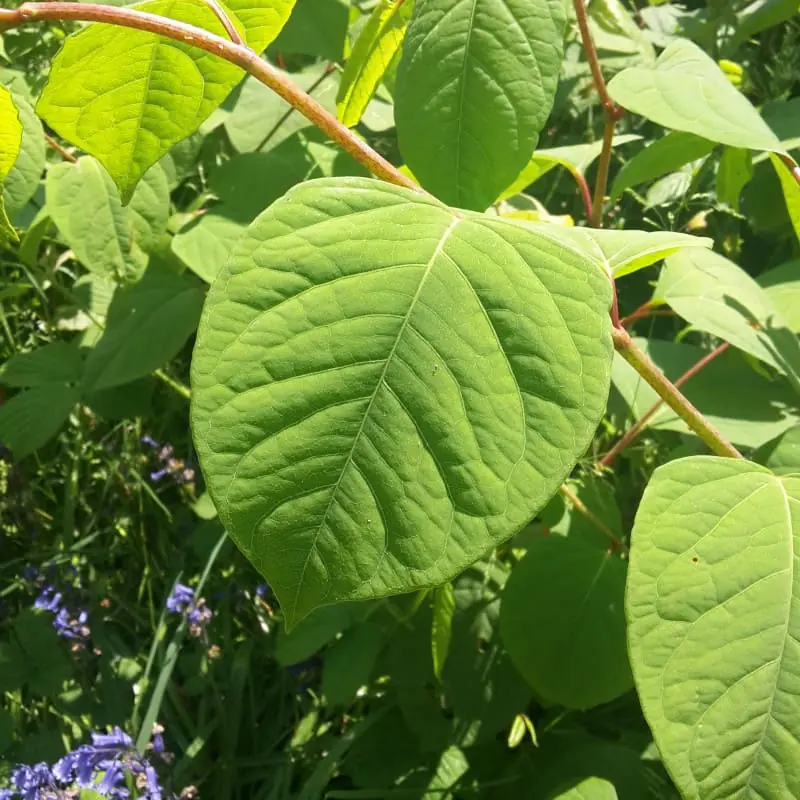
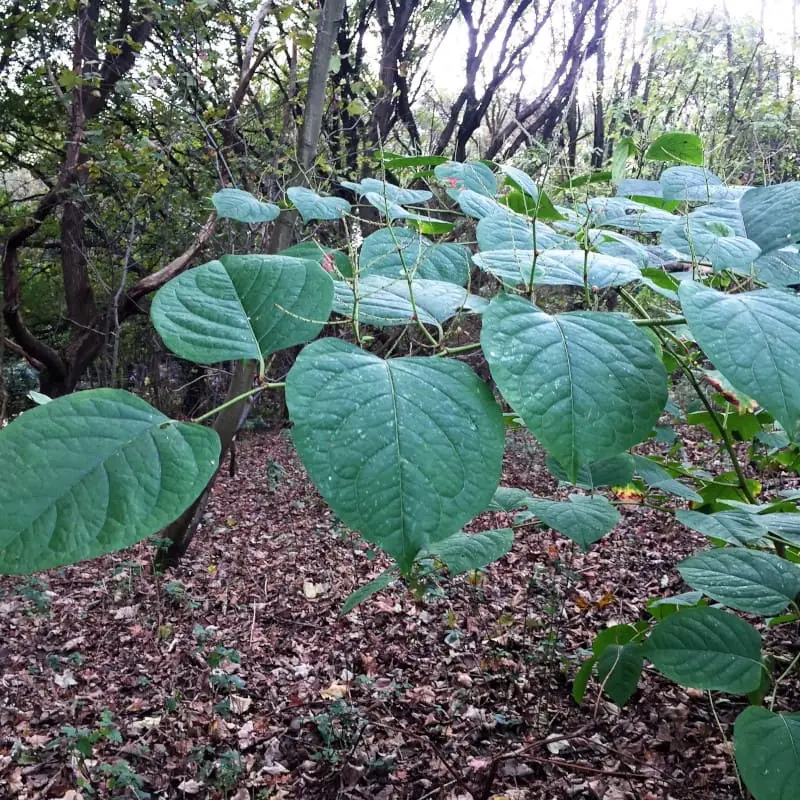
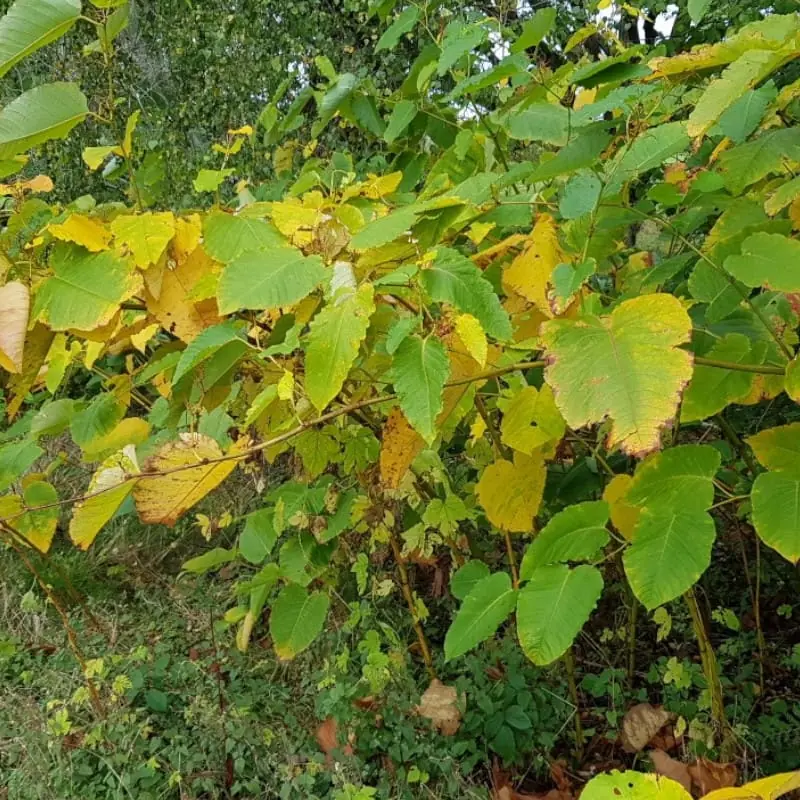
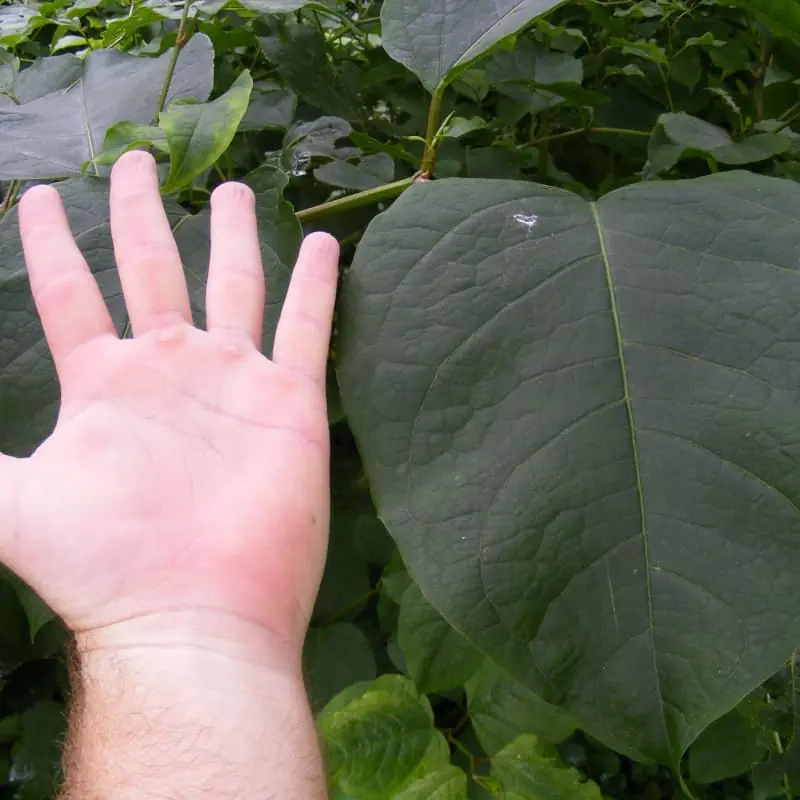
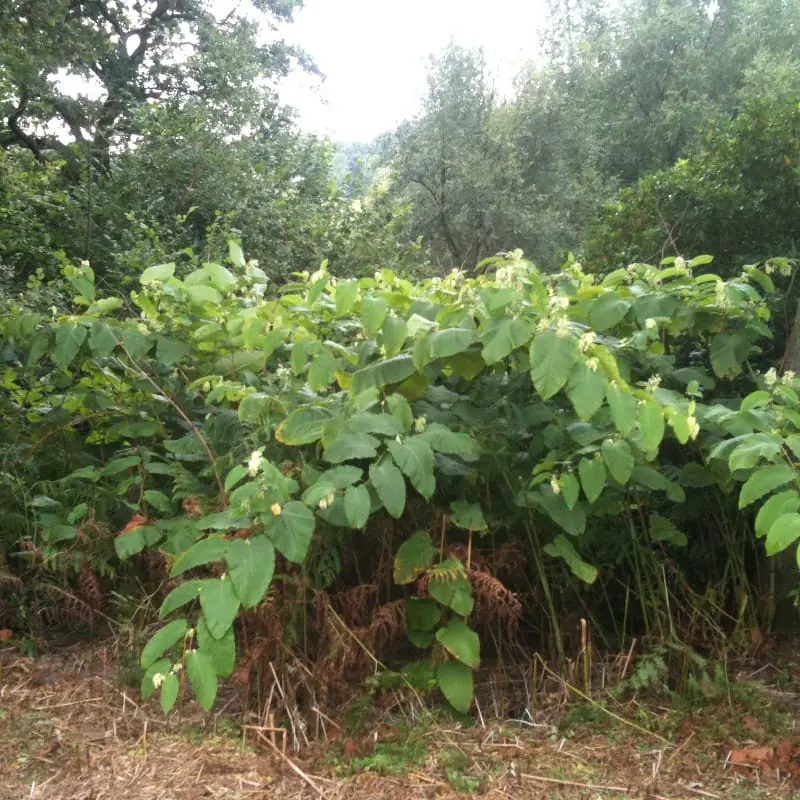
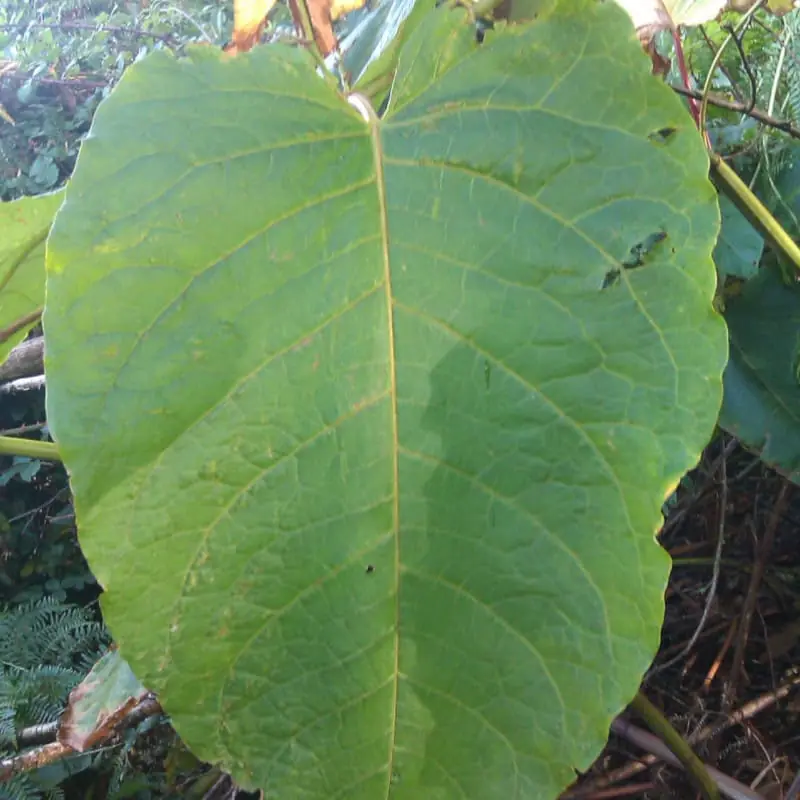
Fallopia Sachalinensis
Giant knotweed
Giant knotweed (Fallopia sachalinensis) was introduced to the UK in the late 1860s, appearing in the 1869-70 catalogue of William Bull of Chelsea. Like Japanese knotweed, Giant knotweed seems to be very tolerant of a wide range of soils from volcanic ash to muddy riverbanks, although its vast size makes it vulnerable to drought. Its huge proportions meant it was not as popular with gardeners as its smaller cousin, which could account for it being less common both in the wild and within residential properties.
Although closely related to Japanese knotweed, Giant knotweed is easy to differentiate as it is a much larger plant, 4-5 m tall with much larger leaves 20-40 cm long. Another key difference is the shape at the base of the leaf which in F. sachalinensis is rounded, forming a heart shape.
Giant knotweed appears on Schedule 9, Part II of the Wildlife and Countryside Act 1981.
Key Characteristics
- Green heart-shaped leaves can grow up to 40 cm long and up to 27cm wide, fine white hairs, known as trichomes, can be found on the undersides.
- Flowers in late summer or early autumn, green-white in colour forming dense clusters.
- Plants typically reach 3-4m in height but can be as much as 5m.
- Typically green canes.
Reynoutria Japonica var. Compacta
Dwarf knotweed
Dwarf knotweed is an uncommon variety of Japanese knotweed that is rarely found outside of ornamental gardens. This petite variety rarely reaches over 1m in height, and has smaller leaves, generally up to 11cm long and 10cm wide. It retains the distinctive ‘zig zag’ stem structure, but the leaves are darker green with crinkled edges and reddish veins. Upright clusters of white or pale pink flowers appear in late summer.
Compacta is not as aggressive as R. japonica, but it does have the ability to reproduce sexually and therefore has the capacity to spread more easily. It can also hybridise with Giant knotweed.
Again, although it shares its classification with R. japonica, it is not entirely clear whether with compacta is covered by the letter of the law that proscribes Japanese knotweed when it comes to property transactions.
Key Characteristics
- Small (8-11cm), dark green leathery leaves with red/purple veins and stems, turning red in autumn.
- Flowers in late summer – white/pink flowers turning dark pink/red in late autumn.
- Plants typically reach 0.5 – 1m in height.
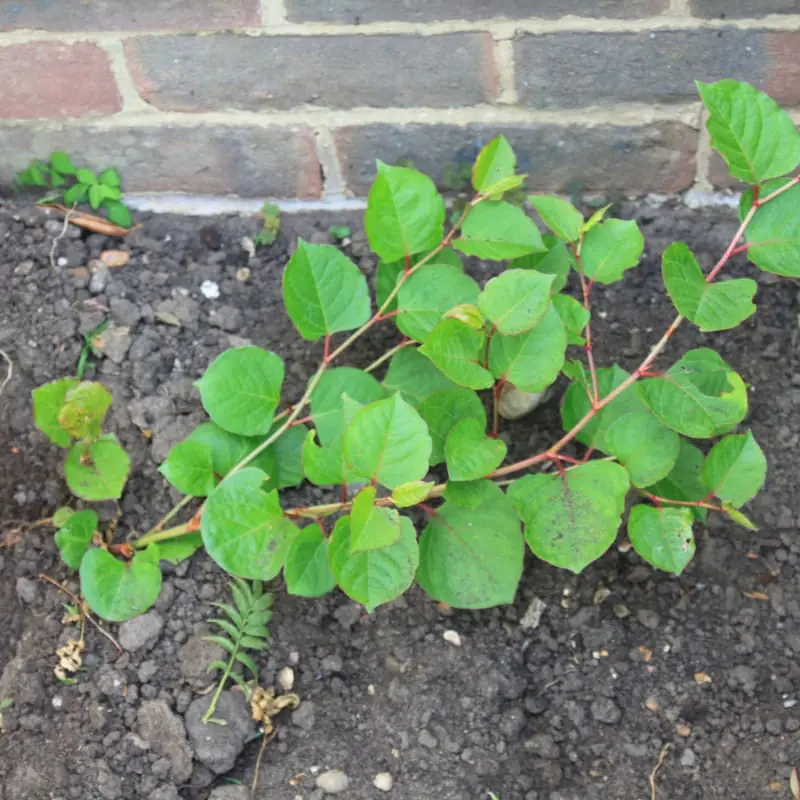
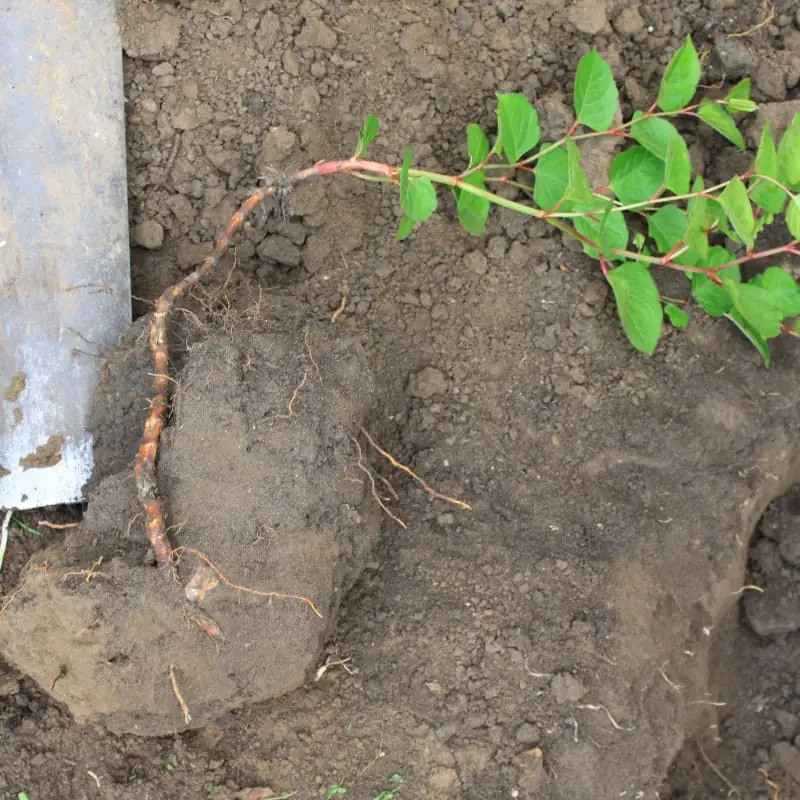
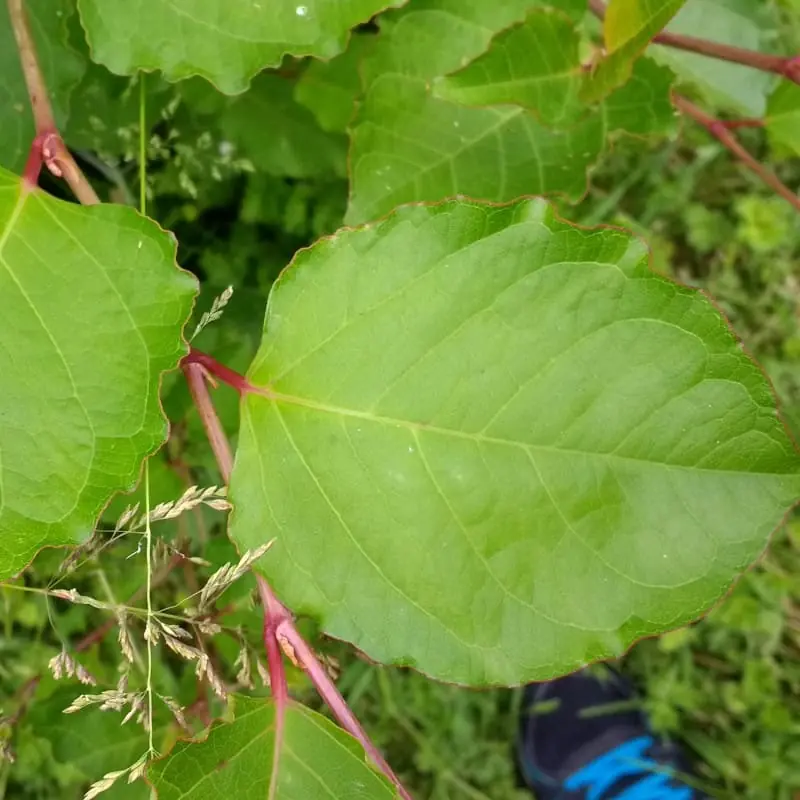
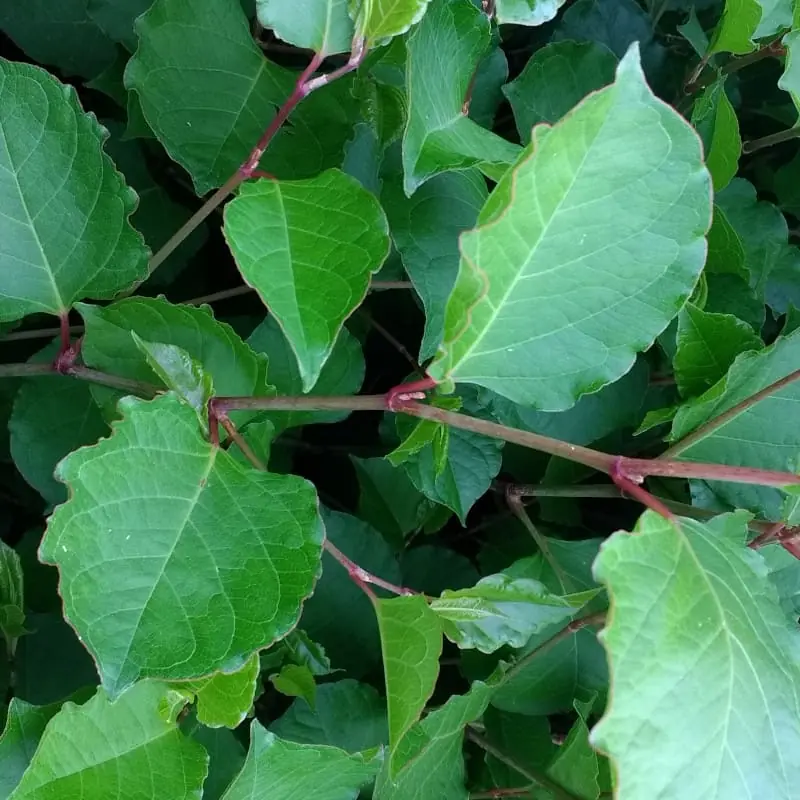
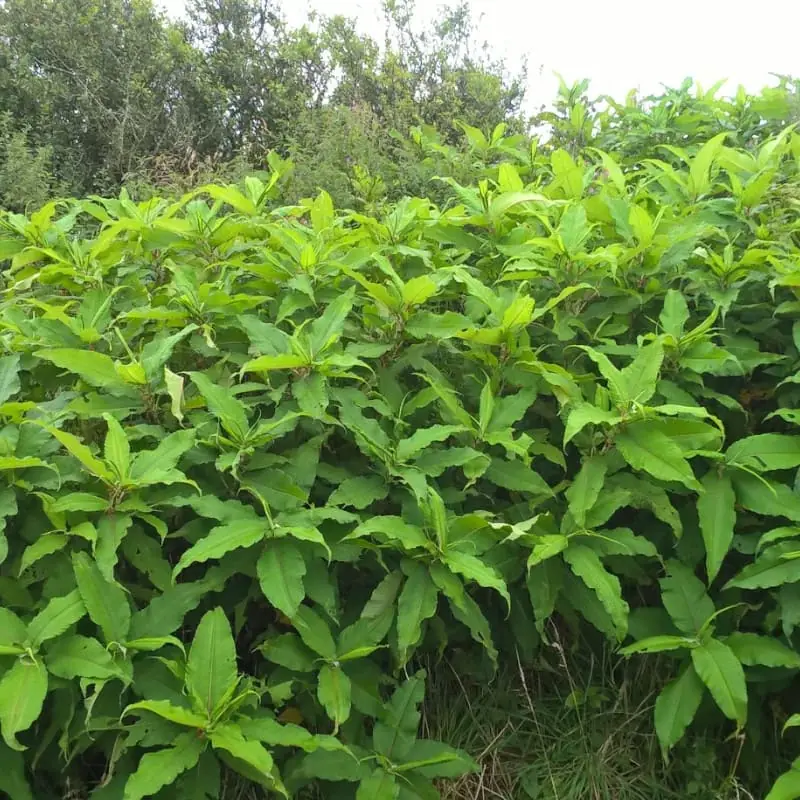
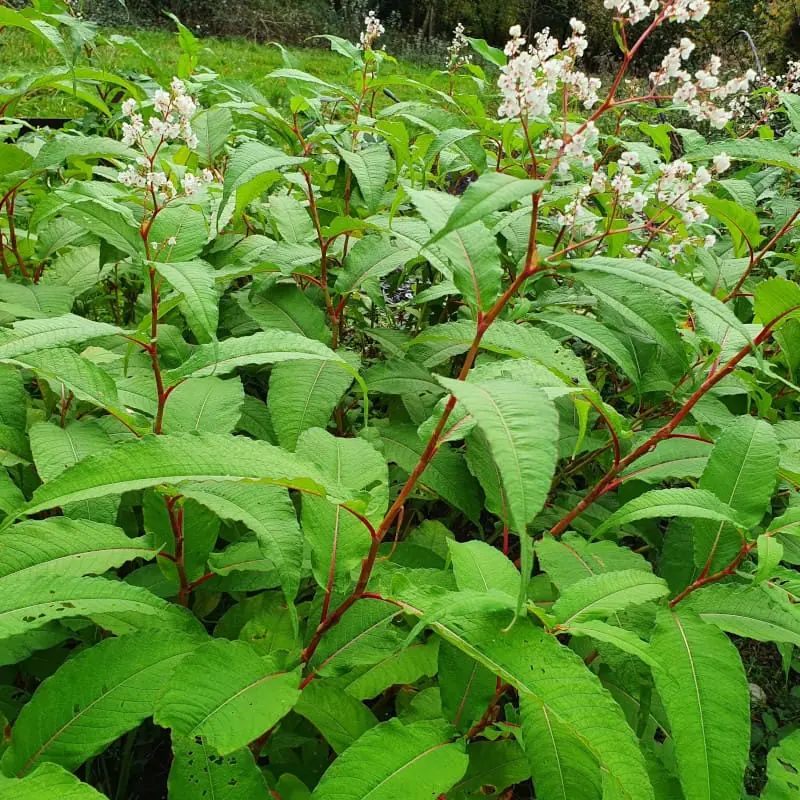
Persicaria Wallichii / Koenigia polystachya
Himalayan knotweed
Himalayan knotweed is a large, thicket-forming plant, reaching up to 2m tall, and has become established in river systems, hedge banks, on woodland edges, roadsides, railway banks and waste ground. It is especially common in South West England.
It is not currently covered by any legislation in the UK, but its invasive nature should not be underestimated. It grows vigorously, creating large, dense stands that exclude native vegetation and prevent tree saplings from establishing.
Although a similar size to Japanese knotweed, the similarities in appearance end there. Himalayan knotweed grows from much smaller, green stems, with large tongue or lance-shaped leaves. Flowers are white clusters with pink centres. Brown, fertile seeds form in autumn. Seeds of the plant are dispersed by wind and water, while rhizome and stem fragments are dispersed in waterways, by flooding and through mechanical ground disturbance.
Key Characteristics
- Long tongue / lance shaped leaves, 9-22cm long × 3-8 cm wide, sometimes fine hairs on underside.
- Flowers in late summer – long clusters of creamy white or pale-pink flowers.
- Plants typically reach 40 – 180cm in height.
- Smooth, green, branching, upright stems.
Learn more about Japanese knotweed
Japanese knotweed resources
GET IN TOUCH
Contact us
Our friendly office staff are available between 9am and 5:30pm, Monday to Friday to answer your enquiries and advise you on the next steps.
Want a survey?
Request a survey online in less than two minutes by simply uploading a photograph and providing a few brief details. A member of the team will swiftly come back to you with further information and our availability.
Not sure if you have knotweed?
There’s no need to wait for a survey. Simply upload an image to our identification form and one of our invasive plant experts will take a look and let you know, free of charge.



